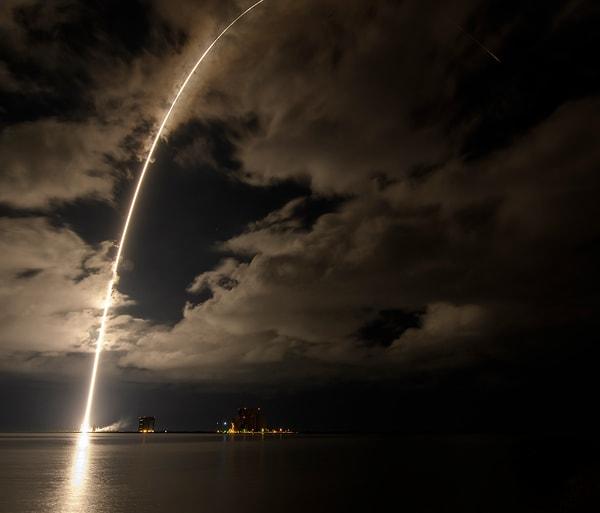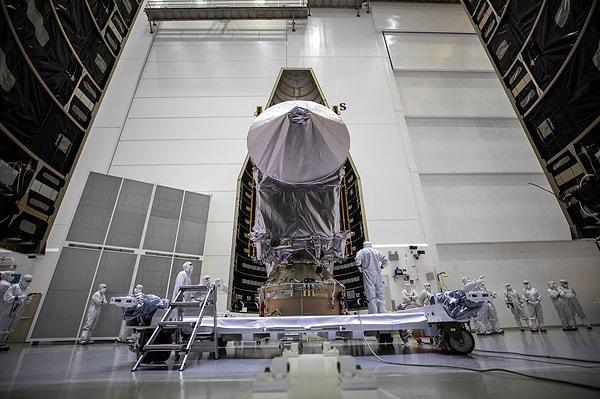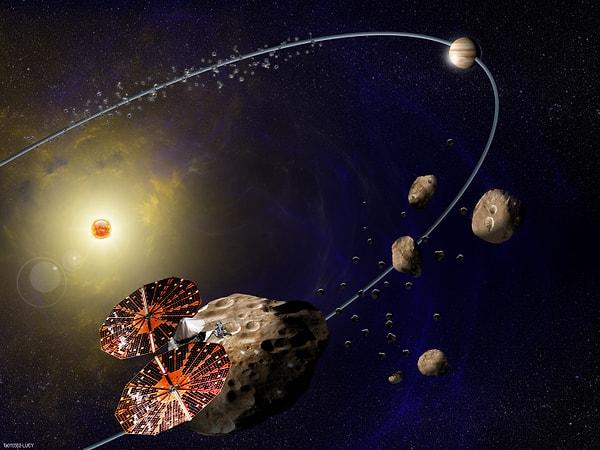One of NASA’s Spacecrafts Will Zoom Past Earth Today!
One of NASA’s asteroid-crushing spacecrafts is about to approach planet Earth, and fanatic stargazers will be able to see it skyrocket past our planet this weekend!

The NASA spacecraft, which is named Lucy, will zoom past Earth's surface exactly a year after its liftoff on Oct. 16, 2021, in order to aid its 12-year quest to travel the Jupiter Trojan asteroids. The spacecraft will slingshot past Earth at about 220 miles just above our planet's surface around the Pacific Ocean at its closest point.
The return of Lucy will allow it to gather orbital energy that will propel it towards a remote asteroid cluster that no space mission has ever visited previously. However, observers from all over the world will have the opportunity to see Lucy as it passes by the globe.
In a press release, Hal Levison, Lucy principal investigator at the Southwest Research Institute (SwRI) Boulder, Colorado office, said, “The last time we saw the spacecraft, it was being enclosed in the payload fairing in Florida,” “It is exciting that we will be able to stand here in Colorado and see the spacecraft again. And this time Lucy will be in the sky.”

Lucy will actually reach Earth from the direction of the sun, and so the spacecraft will be hidden from view by the bright light of the star for the days preceding its arrival.
Prior to its closest approach, Lucy will pass the terminator line, which separates our planet's night and day cycles, and enter Earth's night even while lit up by the sun, thereby making it visible for everyone to see.
In a press release, acting deputy project scientist at SwRI said, 'I'm especially excited by the final few images that Lucy will take of the moon,' “Counting craters to understand the collisional history of the Trojan asteroids is key to the science that Lucy will carry out, and this will be the first opportunity to calibrate Lucy’s ability to detect craters by comparing it to previous observations of the moon by other space missions.”

The spacecraft will return to Earth in 2024 for a second gravity push, which will provide Lucy with the fuel she needs to pass the solar system's primary asteroid belt. Then it will make the journey into the leading Trojan asteroid swarm after observing the asteroid Donaldjohanson. The spacecraft would then pass by six Trojan asteroids: Eurybates, Polymele and the unnamed satellites, Leucus and Orus.
Lucy will then arrive back on Earth in 2030 for another session, preparing it for an encounter with the binary asteroid duo Patroclus-Menoetius in the fading Trojan asteroid clusters.
Lucy's current course will take her perhaps lower than the International Space Station. Which means that the spacecraft will encounter numerous Earth-orbiting satellites and space junk. The space agency has developed certain plans to predict potential dangers and, if necessary, move Lucy to a safe distance to prevent a dangerous collision.
Keşfet ile ziyaret ettiğin tüm kategorileri tek akışta gör!


Send Comment